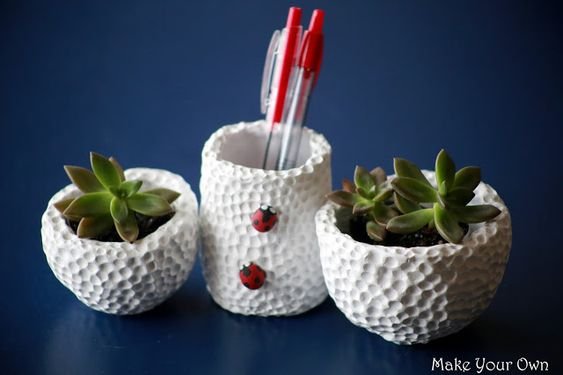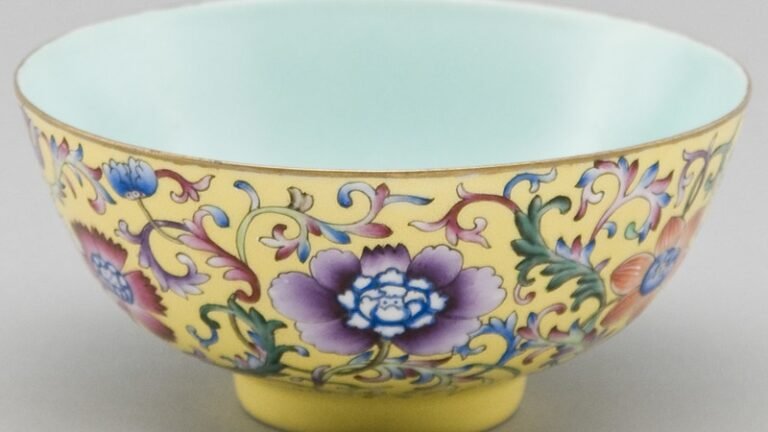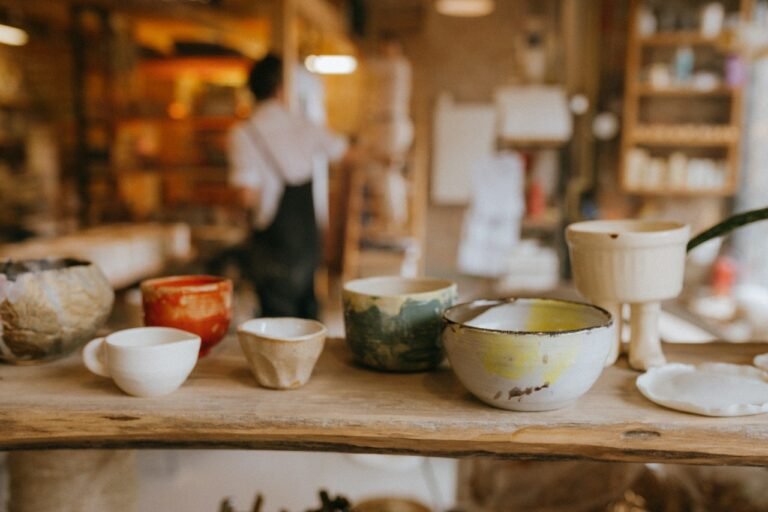Is It Possible to Create Food Safe Pottery with Air Dry Clay? Pros and Cons
Air-dried clay is an admired and kind of affordable choice for large and small art projects. For all up-and-coming artists and craftsmen, this activity for sure can be a great way to practice their skills, while more experienced artists often enjoy the simplicity of air-drying.
Air-dried clay can be used for jewelry, decoration, and various craft projects. The whole process of sculpting with air-dry clay is really entertaining and simple.
No special tools or equipment are required. Mugs, plates, bowls, and more can be made from air-dried clay, but don’t forget to use them for decorative purposes only.
Most naturally dried clays are non-toxic, natural, and water-based, but are not food safe, even after using glass or waterproof sealing. Ingredients vary from brand to brand, so make sure to always check the label before giving it to children or if the skin is sensitive.
For example, Crayola air-dried clay has gluten (wheat) and can cause an allergic reaction if swallowed by mistake.
[amazon box=”B089T7PX27″]
However, epoxy wind-dried clay hardens by a chemical reaction. It is also recommended to wear gloves when handling clay.
Can You Drink out of Air-dry Clay?
Air-dried clay is an astonishing crafting material for both children and adults. It’s easy to use, doesn’t need to be lit, and is very cheap. But while air-dried clay is great and can do many things, it can’t do everything.
Air-dried clay can hold water for a short period of time (this will be longer if it is sealed with a waterproof varnish), but drinking that water is not recommended.
Air-dried clay is not intended to make pottery for food and beverages. Hot drinks have the potential to accelerate the deterioration of the clay. Also, chemicals from sealants and paints can leach into beverages.
The fact is, it is a type of clay that dries in the air; it will get wet again if you try to drink liquid from it. Clay is non-toxic and can be fired in a kiln to make it waterproof, but it is still porous and will not be suitable unless it is coated with a layer of fired ceramic glaze.
I always encourage people to make air-dried clay cups and plates but don’t drink from them.
There are lots of interesting alternatives: you can create cute mugs for your favorite succulents and small plants; create a personalized mug and use it to store pencils, pens, paper clips, and more. For example, you can make a vase by decorating a ceramic or glass mug with air-dried clay.

Can Air-dry Clay Be Waterproof?
One of the questions craftsmen ask is, how can I make air-dried clay waterproof? Air Dry Clay itself is not water-resistant. In other words, it dissolves and withers when exposed to water.
I consider this activity to be more complex for you because it is very difficult to make dry clay or any clay object that is not waterproof.
Why is that? This is because it can absorb moisture. To make matters worse, when the water is absorbed, the dry soil starts to soften, messing up the design of the craft project.
But the good news is that there is still a possible way to waterproof air-dried clay. This can be achieved by coating it with a dry layer of sealant.
Air-dried clay can be waterproofed using glaze, waterproof sealing, or varnish. However, this does not mean that the craft can be used to store water for long periods of time.
Air-dried clays that have been exposed to water (as well as sealed clays) will decompose and mold inside (finding a way for water). Water can soak under the clay. It may break, fall, or mold. Air-dried clay cannot be used in cups.
Air-dried clay cannot be fired, nor can it hold any liquid for a long time. Polymer clay, when properly cured, is as waterproof and durable as plastic. Wax-based clay is plastic clay. This type of clay remains flexible and never hardens. It melts when heated.
So, if you want to make cups from air-dried clay, they will be purely decorative. Unfortunately, they will never hold any liquid permanently.
[amazon box=”B08JZH32JN”]
What Type of Clay Is Food Safe?
In my opinion, the family dinner served with beautifully handmade tableware is fantastic. They add a special touch to our meals and make the experience even more accessible.
Many of us use the tableware that our family used for multiple generations. My grandmother gave it to my mother and is now proudly displayed in our house, but delicately patterned dishes can be dangerous to our health without our knowledge.
You will need traditional clay, stoneware, or ceramics to create food safety. To start, make sure it is food with safe non-toxic glaze. Also, be sure it is free of lead, cobalt, etc.
The surface of the glaze is also important. There should be no holes, cracks, or pits on the surface. These holes tend to trap bacteria that are difficult to kill. However, mainly make sure that the glaze has received non-toxic, food safety certification from the manufacturer.
By the way, you need access to a heavy fire to make food-safe porcelain, such as coffee mugs and cups. If the clay is not properly fired, it will not be ideal pottery.
Basic clay smithing requires a firing temperature of 56 or 1200°C cones to convert to ceramic. And it is only possible with a kiln to provide this high temperature.
Some also need to hang the glazing (food safety glazing), and it also needs to be fired. A kiln is high-priced and massive.
Most people don’t have access to the kiln. If you want to try making cups, bowls, plates, or other food-safe containers, consider taking a pottery or ceramics class.
They will give you access to a kiln. For works made of low-fire clay, all surfaces that meet food and drink are considered food-safe and must be covered with a glaze that is safe for properly-fired food.
Even after firing, the clay remains porous and allows fluid to penetrate the surface and soak into the clay.







